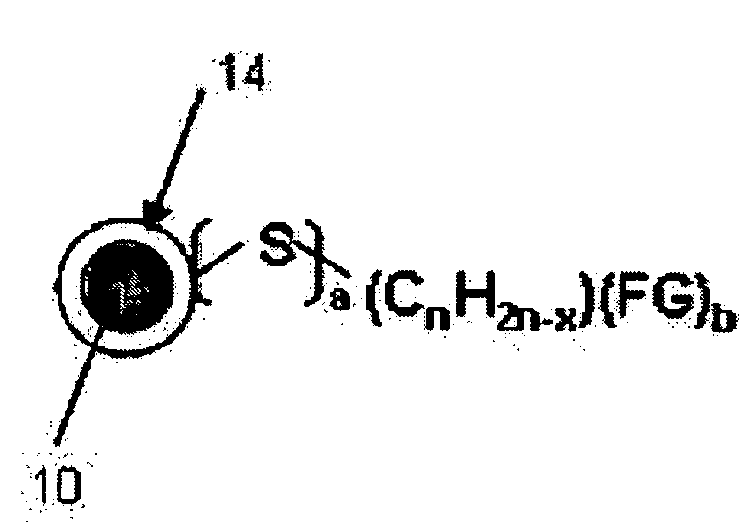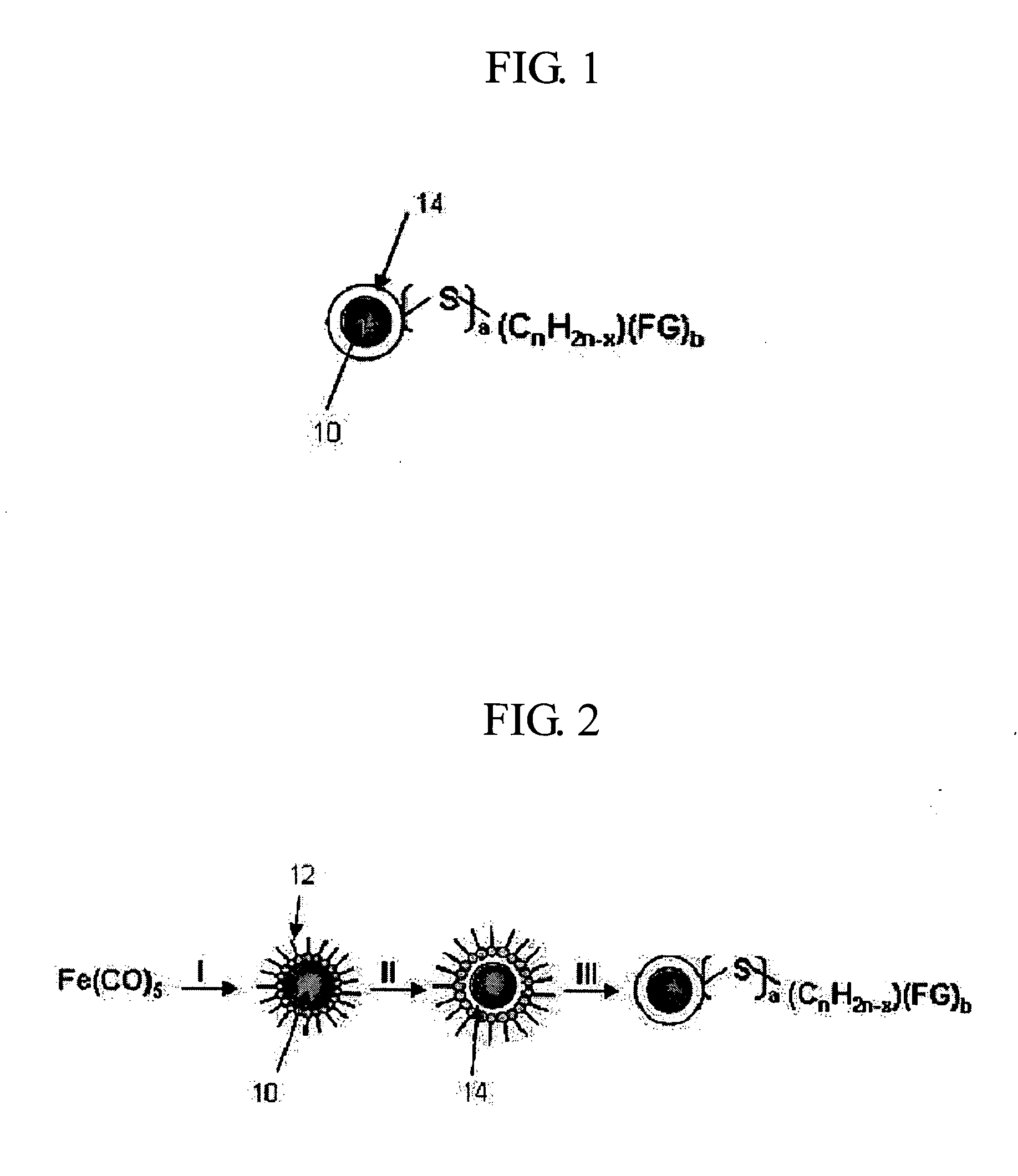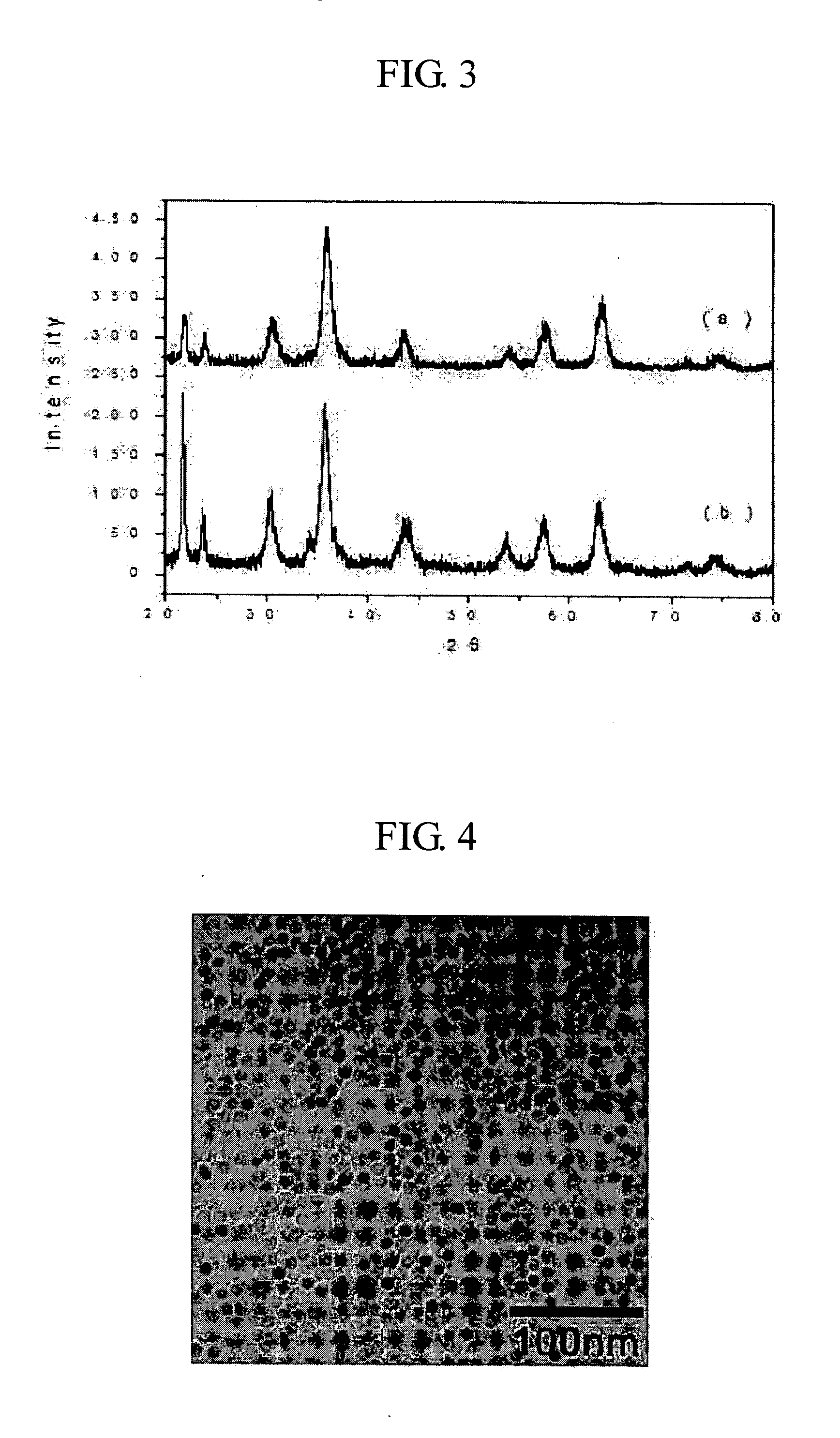Uniform-sized hydrophilic metal oxide nanoparticles and preparation method thereof
a metal oxide nanoparticle, uniform size technology, applied in the direction of manufacturing tools, transportation and packaging, solvents, etc., can solve the problems nanoparticles of such technology can't overcome the problem of particle agglomeration and precipitation, and the nanoparticles of such technology can't achieve the effect of increasing the uniformity of size and dispersibility in water
- Summary
- Abstract
- Description
- Claims
- Application Information
AI Technical Summary
Benefits of technology
Problems solved by technology
Method used
Image
Examples
example 1
Preparation of Hydrophobic γ-Iron Oxide Nanoparticles
[0040] 1.93 mL (6.09 mmol) of oleic acid was dissolved in 20 mL of dioctylether under nitrogen atmosphere and was maintained at 100° C. Subsequently, 0.40 mL (3.04 mmol) of Fe(CO)5 precursors were added to the above solution before heating to reflux for 2 hours. Then, the resultant solution was maintained at 80° C. while bubbling the air through it for 16 hours before it was refluxed for another 2 hours. As a result, hydrophobic γ-iron oxide nanoparticles were produced.
example 2
Layering the Surface of γ-Iron Oxide Nanoparticles
[0041] Keeping the resultant solution from Example 1 at 100° C. while bubbling a nitrogen gas through the solution, and then 0.04 mL (0.304 mmol) of Fe(CO)5 precursors were added subsequently. The solution was, then, refluxed, thereby forming non-stoichiometric iron-rich layer on the surface of the iron oxide nanoparticles. X-ray diffraction patterns and transmission electron microscope images of these nanoparticles are respectively shown in FIG. 3 (a) and 4.
example 3
Surface modification (I) of γ-Iron Oxide Nanoparticles to Obtain Hydrophilic Property
[0042] 0.039 mL (0.45 mmol) of 3-mercaptopropionic acid was added to the resultant solution from Example 2 before it was refluxed, thereby obtaining chemical stability by the covalent bonding between iron (Fe) and sulfur (S), and furthermore, the carboxyl group is exposed from the surfaces of the nanoparticles, yielding hydrophilic γ-iron oxide nanoparticles. The X-ray diffraction patterns and the transmission electron microscope (TEM) images of these nanoparticles are shown in FIG. 3 (b) and FIG. 5. FIG. 6 illustrates the Fe—S covalent bond characterized from the analysis of the x-ray photoelectron spectroscopy.
[0043] The comparison between Example 2 (before surface-modified) and Example 3 (after surface-modified) that are dispersed in toluene and water is shown on the left and the right test tubes, respectively, in FIG. 7. It can be shown that the surface-modified nanoparticles are well dispers...
PUM
| Property | Measurement | Unit |
|---|---|---|
| Length | aaaaa | aaaaa |
| Nanoscale particle size | aaaaa | aaaaa |
| Composition | aaaaa | aaaaa |
Abstract
Description
Claims
Application Information
 Login to View More
Login to View More - R&D
- Intellectual Property
- Life Sciences
- Materials
- Tech Scout
- Unparalleled Data Quality
- Higher Quality Content
- 60% Fewer Hallucinations
Browse by: Latest US Patents, China's latest patents, Technical Efficacy Thesaurus, Application Domain, Technology Topic, Popular Technical Reports.
© 2025 PatSnap. All rights reserved.Legal|Privacy policy|Modern Slavery Act Transparency Statement|Sitemap|About US| Contact US: help@patsnap.com



